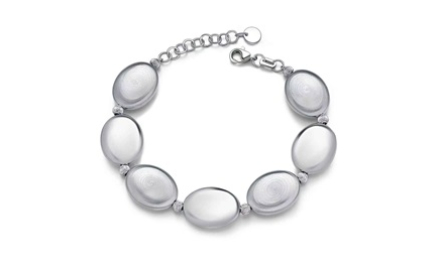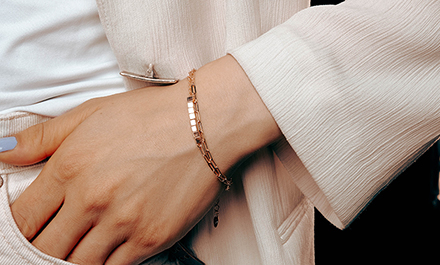Technological advancements are catapulting platinum into new types of jewellery, with breakthroughs in 3D printing and manufacturing processes yielding fresh silhouettes and contemporary designs.
Tùsaire by Scottish-American jewellery designer Maeve Gillies is the first 3D-printed platinum-based jewellery collection to be launched commercially. Aptly named for the Scottish Gaelic word for “pioneer,” it features 30 one-of-a-kind jewellery pieces made from platinum and titanium, including torc necklaces, bracelets, earrings and rings.
According to Platinum Guild International (PGI), the launch of the Tùsaire Collection demonstrates the decorative, scale and structural potential for 3D-printed platinum jewellery. Advances in 3D printing and precious metal powder technology enabled the crafting of intricate, unique shapes in platinum such as lattices, hollow structures and detailed textures. These were previously impossible to achieve, given that platinum is traditionally a heavier and denser metal.
PGI CEO Tim Schlick explained, “We needed to put 3D printing of platinum to the test, to identify the advantages and challenges, in the hope of expediting the technology’s application in making precious jewellery and its ability to create novel designs and experiences. There is no doubt additive manufacturing will be very important for the future of jewellery as it unlocks so many new possibilities.”
According to Gillies, who specialises in diamond bridal jewellery, platinum is the ideal bridal metal due to its strength, resilience and suitability for diamond design innovation.
“For this 3D-printed jewellery collection, my knowledge of platinum was invaluable in allowing me to design new solutions with the printing technology, helping to transform platinum into new jewellery looks and categories,” she said.
The direct metal printing of the platinum pieces was completed by Italy-based additive manufacturing specialist ProGold.
“Due to platinum's high tenacity, strength and high melting temperature, it enables the highest quality of structural integrity with precise heat control. Its good light absorption and low reflectivity also make platinum a comparatively energy-efficient metal for printing with lasers," said PGI Director of Global Innovation Development Tai Wong. “Platinum’s metal attributes are superior for processes like laser powder bed fusion, and we found the best of platinum’s strength and shine are optimised by direct metal printing.”
This is just the latest platinum manufacturing innovation to come to market. Last year saw the launch of AI-created specialty alloy Inoveo Platinum, which is 40 per cent harder than standard platinum alloy and offers the fabrication ease of white gold.
Pino Aliprandini, meanwhile, developed a platinum electroforming bath that allows layers of up to 150 microns. This enables the production of lighter platinum jewellery as well as more intricate designs such as chunkier styles and thinner wedding bands, among others.
Schlick told JNA, “The past two years have witnessed more progress in platinum technology and innovation than the last two decades. We can now help the trade overcome manufacturing and design challenges, bringing platinum on a par with other precious metals, so they can capitalise on unique growth opportunities.”












